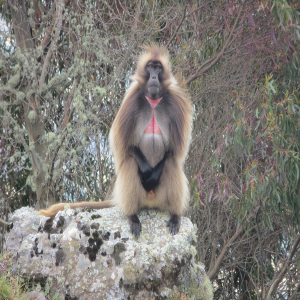 Smart Citations
Smart CitationsSee how this article has been cited at scite.ai
scite shows how a scientific paper has been cited by providing the context of the citation, a classification describing whether it supports, mentions, or contrasts the cited claim, and a label indicating in which section the citation was made.
Diurnal activity patterns and feeding ecology of geladas (Theropithecus gelada) in Ankober District at Kundi, North Shewa, Ethiopia

HTML: 24
All claims expressed in this article are solely those of the authors and do not necessarily represent those of their affiliated organizations, or those of the publisher, the editors and the reviewers. Any product that may be evaluated in this article or claim that may be made by its manufacturer is not guaranteed or endorsed by the publisher.
Theropithecus gelada is the primate species endemic to the central and northwestern highlands of Ethiopia and is the only extant species of the genus Theropithecus. Diurnal activity patterns and feeding behavior of geladas were studied at Kundi, Ankober district, Ethiopia from August 2017 to March 2018 to cover both wet and dry seasons. Scan sampling method was employed to study the activity patterns and feeding behavior of geladas in the study area. Activity scans were collected at 15-minutes intervals for up to 5 minutes duration from 0700 to 1730h. During each scan, individuals were recorded as performing one of the following behaviors: feeding, moving, resting, playing, aggression, grooming, sexual activity and others. Descriptive statistics and Chi-square test were used in data analysis. During the wet season geladas spent grooming 20%, playing 19%, 14% resting, feeding 12%, other activity 11%, moving 9% and 3% in aggression. Geladas spent 27% feeding, 21% moving, 13% other activities, 12% aggression, 7% grooming, 7% playing and 4% resting during the dry season. There were significant differences in all activity time budgets between seasons except other activities. The total time spent feeding on grass blades and cereals were 25.5% and 23.5% in the study area, respectively. There was a significant difference between the age and sex classes of geladas in their activity time budgets. Eleven species of plants were recorded as the food of geladas in this study area. This study provides baseline information on the behavioral ecology of geladas outside protected areas.
How to Cite

This work is licensed under a Creative Commons Attribution-NonCommercial 4.0 International License.
PAGEPress has chosen to apply the Creative Commons Attribution NonCommercial 4.0 International License (CC BY-NC 4.0) to all manuscripts to be published.






